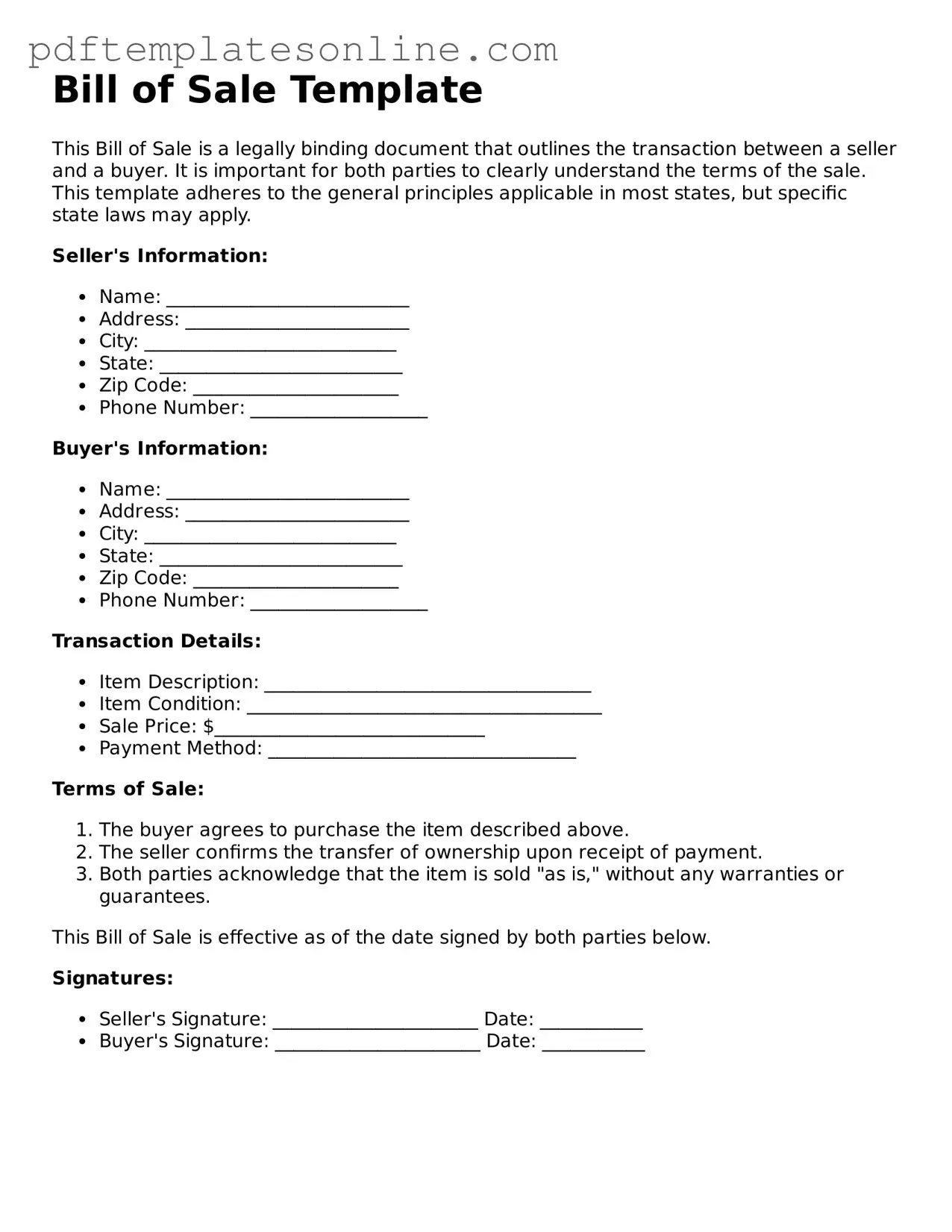When completing a Bill of Sale, individuals often overlook critical details that can lead to complications down the line. One common mistake is failing to include all necessary information about the item being sold. This includes the make, model, year, and Vehicle Identification Number (VIN) for vehicles, or any unique identifiers for other items. Without this information, the document may not serve its purpose effectively.
Another frequent error is neglecting to provide accurate personal information. Sellers and buyers should ensure that their names, addresses, and contact details are correct. Mismatched or incorrect information can create confusion and may lead to disputes later on. It’s essential to double-check these details before finalizing the document.
People often forget to include the date of the transaction. This date is crucial as it establishes when the sale occurred, which can be important for tax purposes and for any potential legal matters. Leaving out the date can result in ambiguity about when the ownership transfer took place.
Additionally, many individuals fail to specify the payment method. Whether it’s cash, check, or another form of payment, clearly stating this in the Bill of Sale helps protect both parties. Without this detail, misunderstandings regarding payment can arise, leading to potential disputes.
Another mistake is not having the document signed by both parties. A Bill of Sale is not legally binding unless both the seller and buyer sign it. This signature confirms that both parties agree to the terms outlined in the document. Omitting this step can render the agreement ineffective.
People sometimes overlook the importance of providing a warranty or "as-is" clause. If the item is sold with a warranty, it should be clearly stated. Conversely, if the item is sold "as-is," this should also be documented. This clarification protects the seller from future claims regarding the condition of the item.
Finally, individuals may forget to keep copies of the Bill of Sale. After the transaction is complete, both parties should retain a copy for their records. This serves as proof of the sale and can be useful in case any issues arise later. Failing to do so can leave one or both parties without important documentation.
